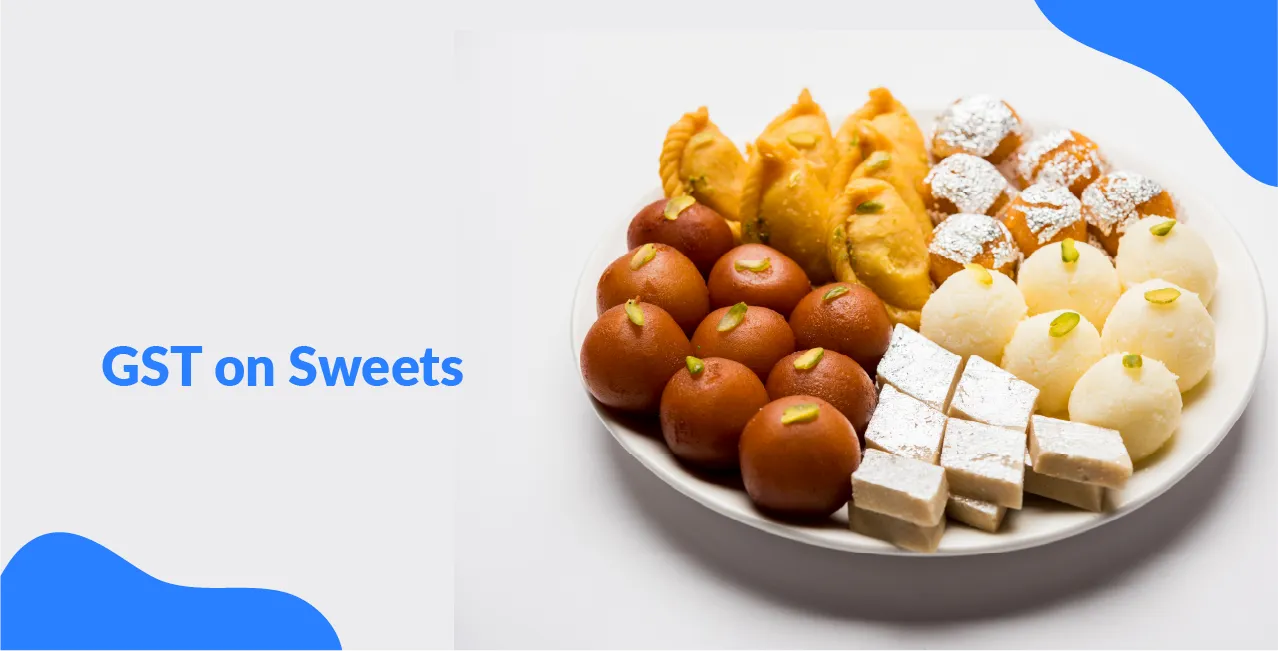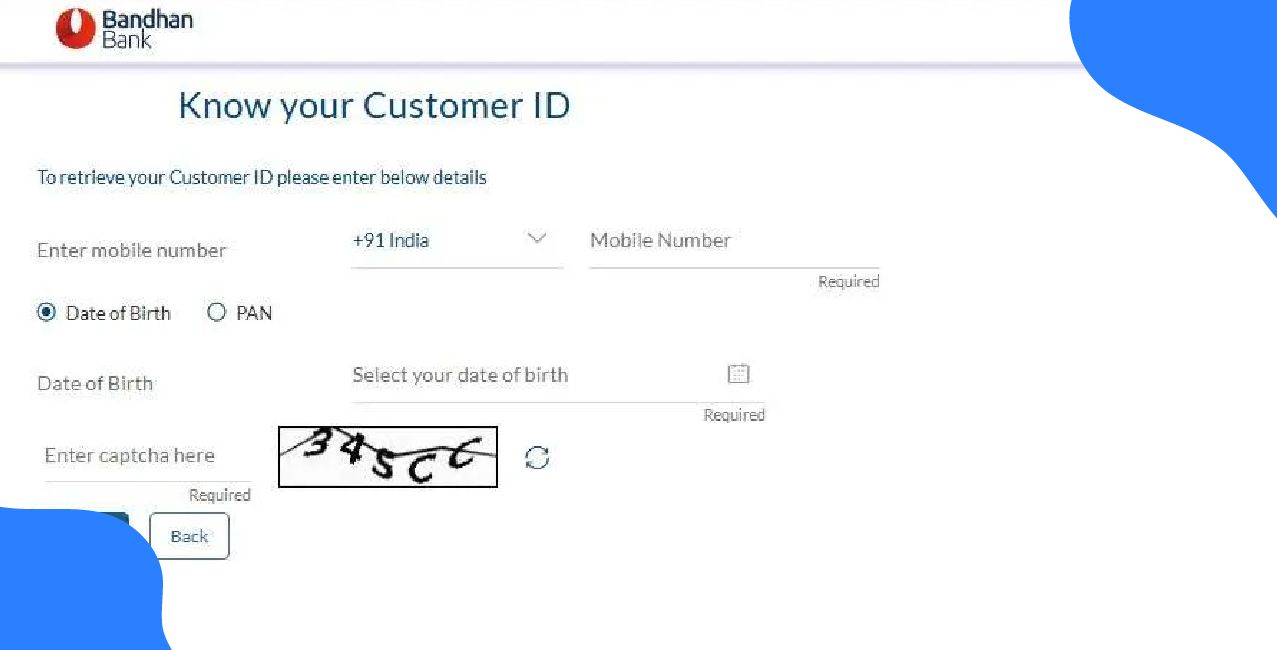
Author
LoansJagat Team
Read Time
5 Min
02 Jul 2025
GST on Sweets – Tax Rate, HSN Code & Billing Details
The Goods and Services Tax (GST) is a unified tax structure for goods and services across India. It has replaced many indirect taxes and brought transparency into the system.
When it comes to sweets, GST plays a vital role in pricing. For instance, Ramesh owns a sweet shop in Jaipur. Before GST, he paid multiple local taxes. Now, under GST, sweets fall under the 5% tax slab. Let’s say he sells ₹50,000 worth of sweets in a month. He collects ₹2,500 as GST from customers and can claim input tax credit (ITC) on ingredients like milk, sugar, and ghee taxed at 5–12%.
Here’s how it looks:
GST Rates for Different Categories of Sweets
Traditional Indian Sweets and Confectionery
Read More – GST on Ice Cream
Traditional Indian sweets are taxed differently under GST, regional sweets have lower rates, while processed or sugar-based confectioneries attract higher GST, as shown below.
HSN Codes and GST Rates for Different Categories of Sweets
Sweets Classification by HSN Codes
To ensure proper tax classification and compliance under the Goods and Services Tax (GST), sweets and confectionery items are categorised using Harmonised System of Nomenclature (HSN) codes.
These codes help determine the applicable GST rates and make classification uniform across India. Below is a table outlining various HSN codes relevant to traditional Indian sweets, sugar confectionery, and novelty items packaged with games:
Impact of GST on the Sweet Industry (in British English)
Introducing the Goods and Services Tax (GST) in India has largely influenced the sweet industry, especially traditional sweet shops and manufacturers. While it aims to bring uniformity in taxation, its impact varies across different categories of sweets.
Key Impacts of GST on the Sweet Industry:
- Standardised Tax Structure: Previously, local taxes varied from state to state. With GST, sweets now fall under a unified tax bracket.
- Increased Compliance Burden: Small sweet shop owners now require GST registration, leading to additional paperwork and accounting needs.
- Effect on Pricing: The prices of premium packaged sweets have risen due to higher tax slabs, affecting customer purchasing behaviour.
- Input Tax Credit Advantage: Manufacturers benefit from input tax credit on ingredients like sugar, milk, ghee, etc.
Example – Ramesh’s Sweet Shop (Lucknow)
Before GST, Ramesh paid a 5% tax (including VAT and local levies). Post-GST, he sells both unpackaged and packaged sweets. Here's how the tax scenario has changed:
Input Tax Credit (ITC) on Sweets
Input Tax Credit (ITC) allows sweet manufacturers and sellers to claim credit for the GST paid on raw materials and services used in the production and sale of sweets. This mechanism helps reduce the overall tax burden and avoids the cascading effect of taxes.
Also Read - GST on Chocolate
How ITC Works in the Sweet Industry:
- Eligible Inputs: Ingredients such as sugar, milk, flour, dry fruits, ghee, and packaging materials (like boxes and wrappers) are taxable supplies. GST paid on these can be claimed as ITC.
- Conditions to Claim ITC:
- The seller must be registered under GST.
- A proper tax invoice must be available.
- Goods or services must be used for business purposes.
- The supplier must have paid the tax to the government.
Example:
Rohit runs a sweet manufacturing unit in Bangalore where he makes a profit of around ₹50,000 per month. Here's how ITC benefits him:
If Rohit collects ₹5,000 as output GST from customers, he can deduct the ₹2,500 ITC and pay only ₹2,500 to the government.
Conclusion
The introduction of GST has brought a uniform tax structure to the sweet industry, replacing the previously fragmented system of state and local taxes. While traditional, unpackaged sweets remain exempt from GST, packaged and branded sweets attract higher tax rates, impacting pricing and consumer choices.
Overall, GST has improved transparency and allowed manufacturers to benefit from input tax credit, but it has also increased the compliance burden for small sweet shop owners. The industry continues to adapt, balancing tradition with modern tax regulations.
FAQ’s
Are all sweets taxed under GST?
No, unpackaged or loose sweets are tax-free, while packaged or branded sweets attract GST.
What is the GST rate on packaged sweets?
Most packaged sweets are taxed at 18% under GST.
Do sweet shops need GST registration?
Yes, if their annual turnover exceeds the threshold limit set by the government.
Can sweet shop owners claim input tax credit?
Yes, but only if they sell taxable items and meet GST compliance.
Does GST affect sweet prices?
Yes, especially for packaged sweets, as the tax adds to the final selling price.
Other Important GST Pages | ||||
About the Author

LoansJagat Team
‘Simplify Finance for Everyone.’ This is the common goal of our team, as we try to explain any topic with relatable examples. From personal to business finance, managing EMIs to becoming debt-free, we do extensive research on each and every parameter, so you don’t have to. Scroll up and have a look at what 15+ years of experience in the BFSI sector looks like.

Quick Apply Loan
Subscribe Now


